Ancient Israelite clothing
Israelite man
Undergarments
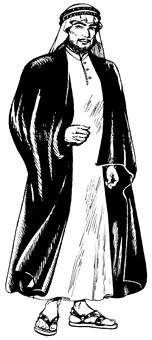 The earliest and most basic garment was the 'ezor (ay-zore) or ḥagor (khag-ore), an apron around the hips or loins,that in primitive times was made from the skins of animals. It was a simple piece of cloth worn in various modifications, but always worn next to the skin. Garments were held together by a belt or girdle, also called an 'ezor or ḥagor.
The earliest and most basic garment was the 'ezor (ay-zore) or ḥagor (khag-ore), an apron around the hips or loins,that in primitive times was made from the skins of animals. It was a simple piece of cloth worn in various modifications, but always worn next to the skin. Garments were held together by a belt or girdle, also called an 'ezor or ḥagor.
The 'ezor later became displaced among the Hebrews by the kuttoneth (keth-o-neth). an under-tunic. The kuttoneth appears in Assyrian art as a tight-fitting undergarment, sometimes reaching only to the knee, sometimes to the ankle. The kuttoneth corresponds to the undergarment of the modern Middle Eastern agricultural laborers: a rough cotton tunic with loose sleeves and open at the breast. Anyone dressed only in the kuttoneth was considered naked
Outer garments
simla
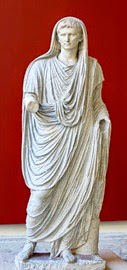 The simla (sim-law) was the heavy outer garment or shawl of various forms. It consisted of a large rectangular piece of rough, heavy woolen material, crudely sewed together so that the front was unstitched and with two openings left for the arms. Flax is another possible material.
The simla (sim-law) was the heavy outer garment or shawl of various forms. It consisted of a large rectangular piece of rough, heavy woolen material, crudely sewed together so that the front was unstitched and with two openings left for the arms. Flax is another possible material.
In the day it was protection from rain and cold, and at night peasant Israelites could wrap themselves in this garment for warmth . The front of the simla also could be arranged in wide folds and all kinds of products could be carried in it
Every respectable man generally wore the simla over the kuttoneth , but since the simla hindered work, it was either left home or removed when working. From this simple item of the common people developed the richly ornamented mantle of the well-off, which reached from the neck to the knees and had short sleeves
me'il
The me'il (meh-eel) or cloak was generally worn over the undergarment, The me'il was a costly wrap and, according to the description of the priest's me'il, was similar to the sleeveless abaya This, like the me'il of the high priest, may have reached only to the knees, but it is commonly supposed to have been a long-sleeved garment made of a light fabric, probably imported from Syria
Religious wear
The Torah commands that Israelites wear tassels or fringes (ẓiẓit or gedilim) attached to the corners of garments
Phylacteries or tefillin are in use by New Testament times Tefillin are boxes containing biblical verses that are attached to the forehead and arm by leather straps
Phylacteries or tefillin are in use by New Testament times Tefillin are boxes containing biblical verses that are attached to the forehead and arm by leather straps
Headwear
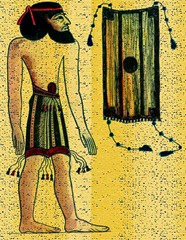 Depictions show some Hebrews and Syrians bareheaded or wearing merely a band to hold the hair together. Hebrew peasants undoubtedly also wore head coverings similar to the modern keffiyeh, a large square piece of woolen cloth folded diagonally in half into a triangle. The fold is worn across the forehead, with the keffiyeh loosely draped around the back and shoulders, often held in place by a cord circlet. Men and women of the upper classes wore a kind of turban, cloth wound about the head. The shape varied greatly
Depictions show some Hebrews and Syrians bareheaded or wearing merely a band to hold the hair together. Hebrew peasants undoubtedly also wore head coverings similar to the modern keffiyeh, a large square piece of woolen cloth folded diagonally in half into a triangle. The fold is worn across the forehead, with the keffiyeh loosely draped around the back and shoulders, often held in place by a cord circlet. Men and women of the upper classes wore a kind of turban, cloth wound about the head. The shape varied greatlyFootwear
Sandals (na'alayim) of leather were worn to protect the feet from burning sand and dampness.Sandals might also be of wood, with leather straps Sandals were not worn in the house nor in the sanctuary
Israelite women
A woman's garments mostly corresponded to those of men: they wore simla and kuttoneth. Women's garments evidently differed too from that of a men Women's garments were probably longer had sleeves , presumably were brighter colors and more ornamented, and may also have been of finer material.
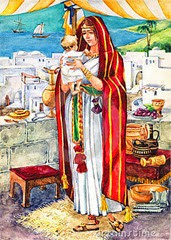 Further, mention is made of the mițpaḥațh, a kind of veil or shawl This was ordinarily just a woman's neckcloth. Other than the use by a bride and other cases a woman did not go veiled The present custom in the Middle East to veil the face are due to Islam. According to ancient laws, it reached from the forehead, over the back of the head to the hips or lower, and was like the neckerchief of the peasant woman in Palestine today
Further, mention is made of the mițpaḥațh, a kind of veil or shawl This was ordinarily just a woman's neckcloth. Other than the use by a bride and other cases a woman did not go veiled The present custom in the Middle East to veil the face are due to Islam. According to ancient laws, it reached from the forehead, over the back of the head to the hips or lower, and was like the neckerchief of the peasant woman in Palestine today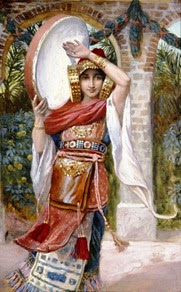
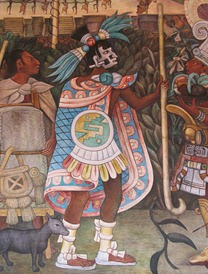
Blogger Labels:


EmoticonEmoticon